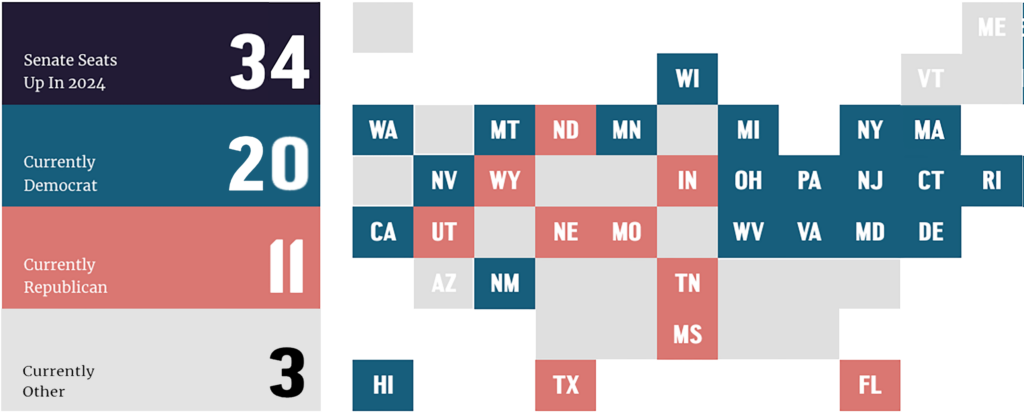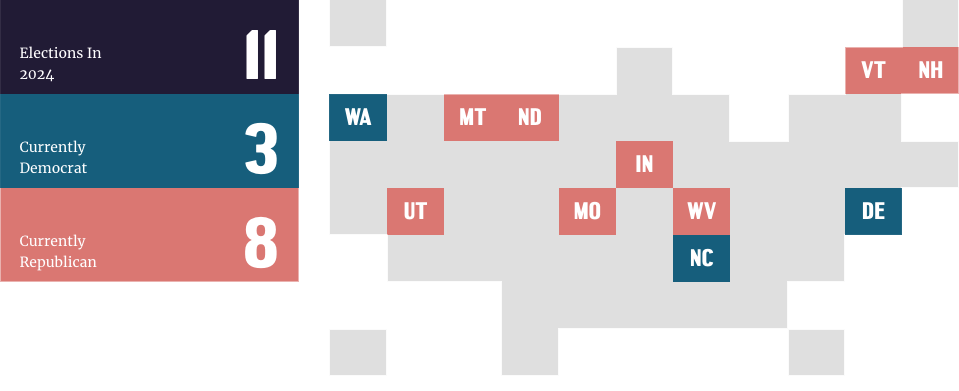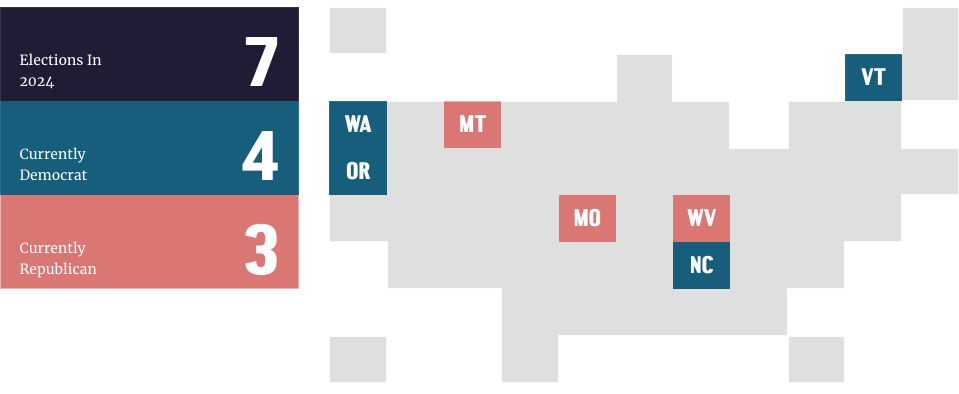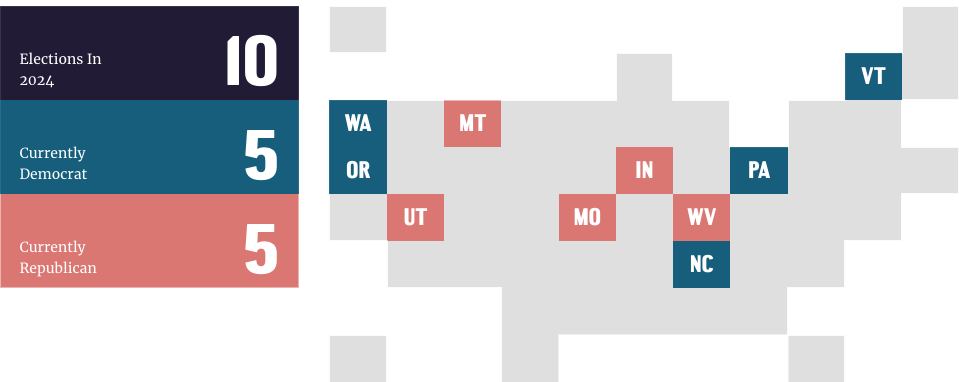Overview
An election for President of the United States happens every four years on the first Tuesday after the first Monday in November. The presidential election will be November 5, 2024.
The President is both the head of state and the head of government, as well as the Commander-in-Chief of the armed forces.
The term length for a President is four years, with a two-term lifetime limit.
THE PRESIDENT IS BOTH THE HEAD OF STATE AND THE HEAD OF GOVERNMENT, AS WELL AS THE COMMANDER-IN-CHIEF OF THE ARMED FORCES.
The
Nomination
Once all the Primary Elections have occurred, each political party hosts a Convention where the party’s Presidential Nominee is decided. From then on, the party will support that candidate and that will be the name on your ballot in the upcoming November.
The
Vice President
The Vice President is elected alongside the President in the General Election. When you vote for a President, you are also casting a vote for that candidate’s chosen Vice President.
A Vice President’s primary responsibility is to be ready at any time to assume the President’s duties if the President is unable to perform their role. This could include death, resignation, temporary incapacitation, or because the Cabinet and Vice President agree in a majority that the President is no longer able to assume Presidential duties.
Overview
Congress is made up of both the Senate and the House of Representatives, and is called the Legislative Branch of the US Government.
These 535 elected officials are policymakers who you should see as your voice in the Capitol. The positions are designed to act as extensions of their constituents’ needs and beliefs, so it benefits you to do your research on which candidates you should expect to see on your ballot.
The Senate
There are 100 Senators, two for each state. They are picked by their state’s popular vote and serve for six year terms. These six year terms are staggered so that around one-third of the Senate is up for election every two years.
Among other requirements, Senators must be US citizens for at least nine years and residents of the state they represent.

The House of Representatives
The House of Representatives has many more elected officials than the Senate, with 435 members divided among the 50 states in proportion to their population. There are also six non-voting members, representing the District of Columbia, the Commonwealth of Puerto Rico, and four other territories of the United States.
The Speaker of the House is elected by the entire group of Representatives, and they are third in the line of succession of the Presidency. (Behind the Vice President.)
Members of the House are elected every two years and must be 25 years of age, a U.S. citizen for at least seven years, and a resident of the state (but not necessarily the district) they represent.

Overview
State elections can take place in any year, and sometimes even at different times throughout the year.
Compared to Congress, state officials like the Governor, Secretary of State, or Attorney General make decisions on a much more focused level, and might impact your daily life as much or even more than federal decisions.
These positions have varying responsibilities and term lengths, so there’s no one-size-fits-all national cycle for all voters. Check out the maps below and read up on your ballot to see who’s up for election this year in your district.
Governor
Governors are state managers who are responsible for the implementation of state laws, approval of state budgets, confirmation of certain new appointed positions, and oversight of statewide executive branch functions.
The requirements to become Governor as well as the limits on the powers and term limits once one has been elected vary widely by state. (For example, in some states there is no citizenship requirement to become Governor while in others 20 years of citizenship is required.)
The race to become Governor is sometimes called the Gubernatorial Election.
Check out the rules in your state to see what scope of power you are choosing to bestow to the names on your ballot.

Secretary Of State
Although there is a federal Secretary of State which is appointed by the President, many states also elect their own Secretary of State.
The duties of the Secretary of State vary widely across different states, but consistently include and focus on the leadership of state elections.

Attorney General
The Attorney General serves as the top legal advisor to the state government, and acts as state’s chief law enforcement officer.
43 states elect their Attorneys General by popular vote, and the rest are appointees by other elected officials. Some states enforce term limits on the position, but many don’t.
The duties and laws surrounding the Attorney General is specific to each state, so reviewing those may be key in deciding who you’ll vote for on Election Day.

Overview
Although the Presidential ticket is the most-talked about reason to go to the polls on Election Day, casting a vote for a local position like Mayor, City or Town Council, or the School Board can often make the most important impact on residents’ day-to-day lives.
Additionally, local ballot measures will be up for your approval. These pieces of proposed legislation can dramatically change how your city or town is run, and are crucial to the operation of local government.
Mayor
Mayors are elected to many different sizes of towns and cities, and their roles vary greatly based on that scope of power.
For example, some Mayors in smaller towns may serve only part-time roles while Mayorship of a city like New York or Los Angeles is a full-time job. There are also varying relationships between Mayors and their City or Town Councils, with many ways of ensuring that local leadership is accomplished smoothly and fairly.
City Or Town Council
School Board
A school board is a corporate body that oversees and manages a public school district’s affairs, personnel, and properties. School board members are elected by the residents of its school district.
School board members’ authorities and duties are defined by the state and federal constitutions and laws, as well as by rules and regulations promulgated by the Board of Regents and the commissioner of education.
Ballot Measures
Ballot measures are sometimes called “propositions” and are meant as a way to enact new legislation or redefine current laws.
This part of a ballot can be exciting to vote on, as it is the most regular direct influence on local legislation that many voters experience.
Some information on this page was assembled from these trusted sources: WhiteHouse.gov, “The Executive Branch”, USA.gov/Election, National Archives, “The Electoral College” National Governors Association. For more context, please visit those pages directly.